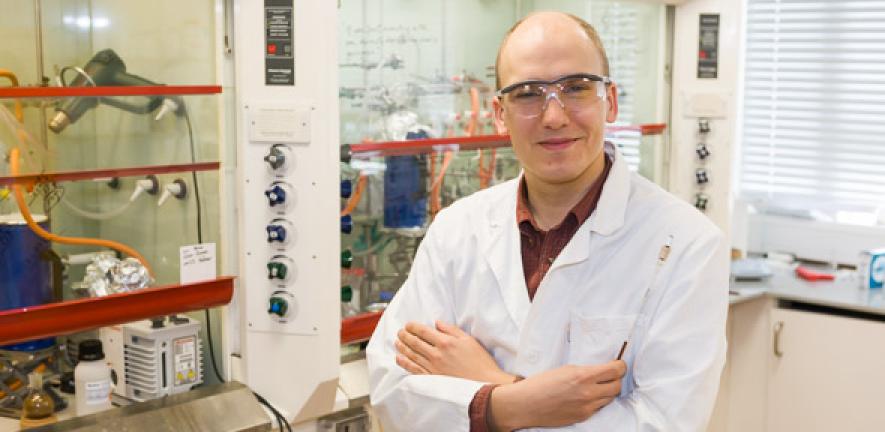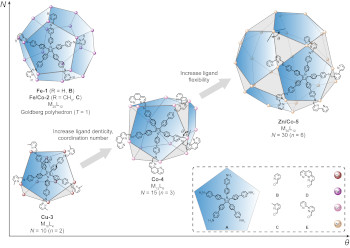
Building a bigger box
Nanocages are tiny artificial containers which can be used to deliver therapeutic drug cargoes to a target destination in the body. But some drug molecules are like gifts that are too big for a standard-sized nanocage ‘box’. Now, in an article published today in Nature Synthesis, researchers from the Nitschke group describe how they have built a super-sized nanocage that could be used to deliver larger drug cargoes. They have built a bigger box.
Progressively larger nanocages

Simple building blocks
Rational control over the self-assembly of these types of discrete, large, hollow coordination cages generally poses considerable challenges. So instead of following traditional self-assembly methods, the team decided to use a simple building block process inspired by natural biological systems. Using the new method, they were able to build progressively larger artificial nanocages, with the largest cage having an enclosed volume greater than 92 cubic nanometres -- the largest ligand-enclosed inner cavity volume ever made.
Larger cages have been reported, but they have more open ligand frameworks, which are not as useful because these cages have not been able to bind cargoes. Prospective ‘guest’ molecules slip out between the widely-spaced bars, unless they are covalently tethered to the ‘host’ framework.
First author Dr Kai Wu
 First author Kai Wu, a postdoctoral researcher in the Nitschke lab, said: “The findings of this study are important because they demonstrate how we are able to create ever-larger complex, functional structures using simple building blocks.”
First author Kai Wu, a postdoctoral researcher in the Nitschke lab, said: “The findings of this study are important because they demonstrate how we are able to create ever-larger complex, functional structures using simple building blocks.”
Larger cargoes
The super-sized nanocages have potential applications in fields such as drug delivery and biotechnology, where they could be used to deliver larger therapeutic biomolecules to specific parts of the body.
The researchers also note that the large internal cavities of the nanocages could serve as a platform for the binding of large biomolecules, such as hydrophobic membrane proteins or proteases, which could be useful in drug discovery and development.
Wu said: “Overall, this research expands our understanding of how to create nanoscale structures and may have practical implications in a variety of fields.”
Professor Jonathan Nitschke, who led the research, said: ”This work, sponsored in part by Astex Pharmaceuticals under its Sustaining Innovation Postdoctoral Programme, aims to have real-world impact in the field of new drug development.”
Research
K. Wu, T. K. Ronson, P. Su, Z. Chen, L. Goh, A. W. Heard, X. Li, F. Klautzsch, C. A. Schalley, M. Vinković & J. R. Nitschke, Systematic construction of progressively larger capsules from a fivefold linking pyrrole-based subcomponent, Nature Synthesis (6 April 2023)

